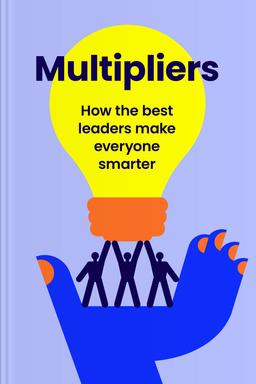You’ll learn
- How to identify diminishers from multipliers
- Why diminishers harm collective achievement
- Strategies to foster team intelligence
- What a leader must do to amplify talent
russia has launched a full-scale war in Ukraine. Donate to support Ukraine and protect the world’s peace.

first KEY POINT
People have often described their meetings with the great British Prime Minister, William Ewart Gladstone, as challenging, leaving individuals feeling intellectually inferior. In contrast, Benjamin Disraeli, Gladstone's rival, had a knack for making people feel important and valued. They are two leaders from the same country, yet they have contrasting approaches. How can this be?Benjamin Disraeli is well known for his ability to bring out the best in others. Is this a trait unique to him? Not exactly. Leaders like him, referred to as “Multipliers” by Liz Wiseman and Greg McKeown, exist worldwide. Broadly speaking, a leader is either a Multiplier or a Diminisher. The titles have probably provided an overview of each category, but let's dig deeper.Many things differentiate Multipliers from Diminishers; one of them is their perception of intelligence. Multipliers see intelligence as something that can be cultivated in others. They don't believe in the concept of a “dumb” person.
On the other hand, Diminishers hold a skewed view of intelligence, perceiving only a select few, including themselves, as truly intelligent. Diminishers believe others will never figure things out without them, making them think their intelligence is an excuse to be oppressive and controlling. Furthermore, Diminishers find it difficult to trust people to complete a given task and are quick to criticize any signs of struggle or failure.This summary focuses on multipliers, leaders who amplify the intelligence of those around them. It explores why and how these leaders enhance the capabilities of everyone around them. It also describes how to apply the multiplication logic to maximize underutilized people and multiply intelligence without requiring a huge investment. Curious already? This is just the beginning.
second KEY POINT
In some cases, diminishers and multipliers work in similar ways. For example, both seek intelligent individuals and view themselves as leaders. However, five distinct disciplines and practices set multipliers apart from diminishers.Multipliers, unlike diminishers:• Attract and optimize talentMultipliers lead by assisting individuals in discovering their talents and putting them to use. Conversely, diminishers focus on personal gains, acting as empire builders who aim to own and control resources for increased productivity. In short, the diminisher is a private empire builder, while the multiplier builds other people.• Create intensity that requires thinkingMultipliers establish a distinctive and highly stimulating work atmosphere, providing everyone the freedom to excel. They function as liberators, a comfortable and safe environment for their team. But diminishers are tyrannical, making life challenging and stressful for their subordinates.• Extend challengesMultipliers operate as challengers by creating more opportunities, while diminishers adopt a know-it-all approach, always wanting to showcase their knowledge because they believe no one else knows better.• Debate decisionsMultipliers encourage others to contribute and debate an issue before making decisions. Diminishers don't give room for debate; they make decisions independently, leaving the organization in the dark.• Instill ownership and accountabilityMultipliers maintain success by serving as investors; they inspire commitment from others. In contrast, diminishers jump to conclusions, taking charge of every decision or profit.

Continue reading with Headway app
Continue readingfirst KEY POINT
second KEY POINT
third KEY POINT
fourth KEY POINT
fifth KEY POINT